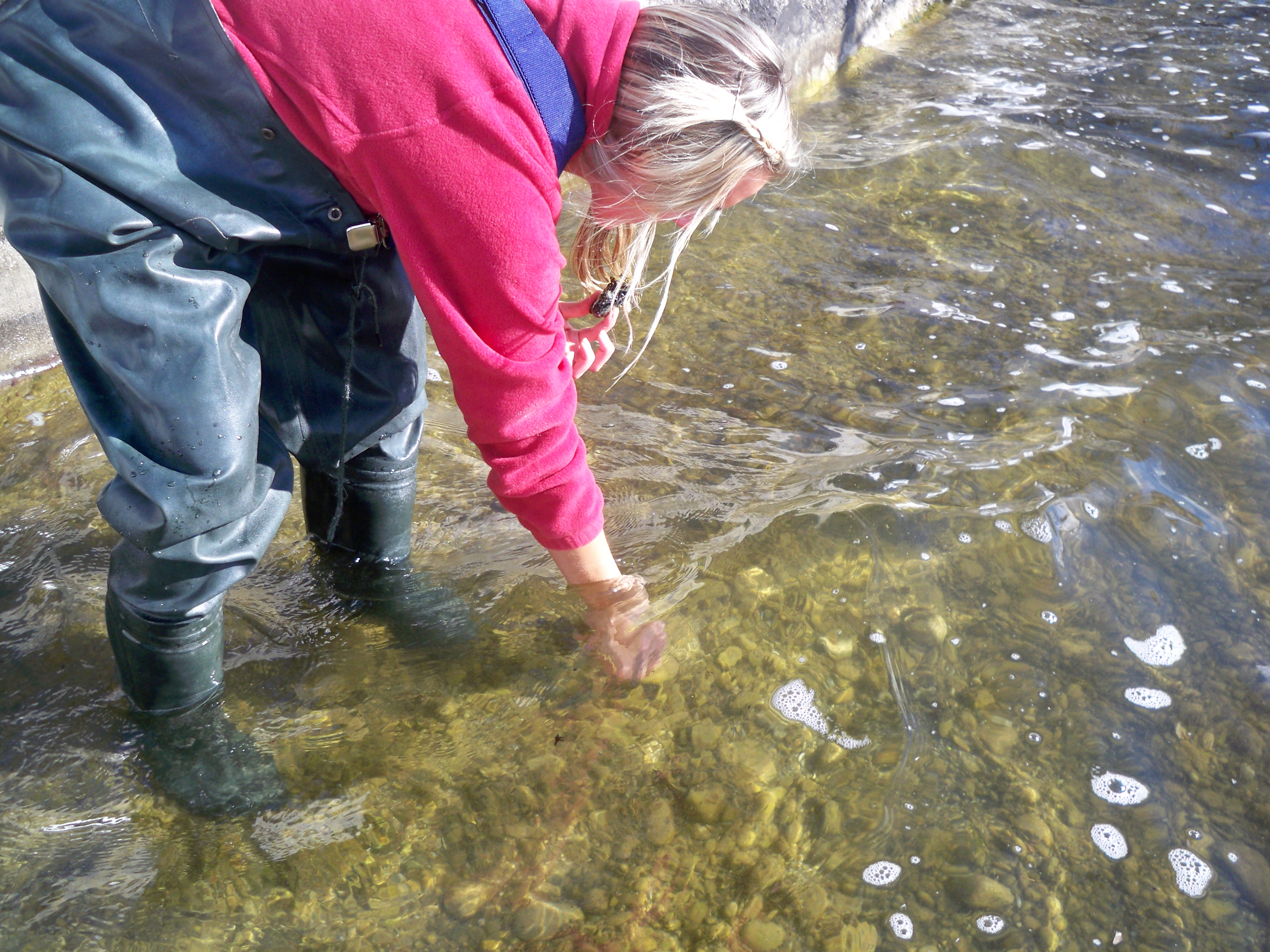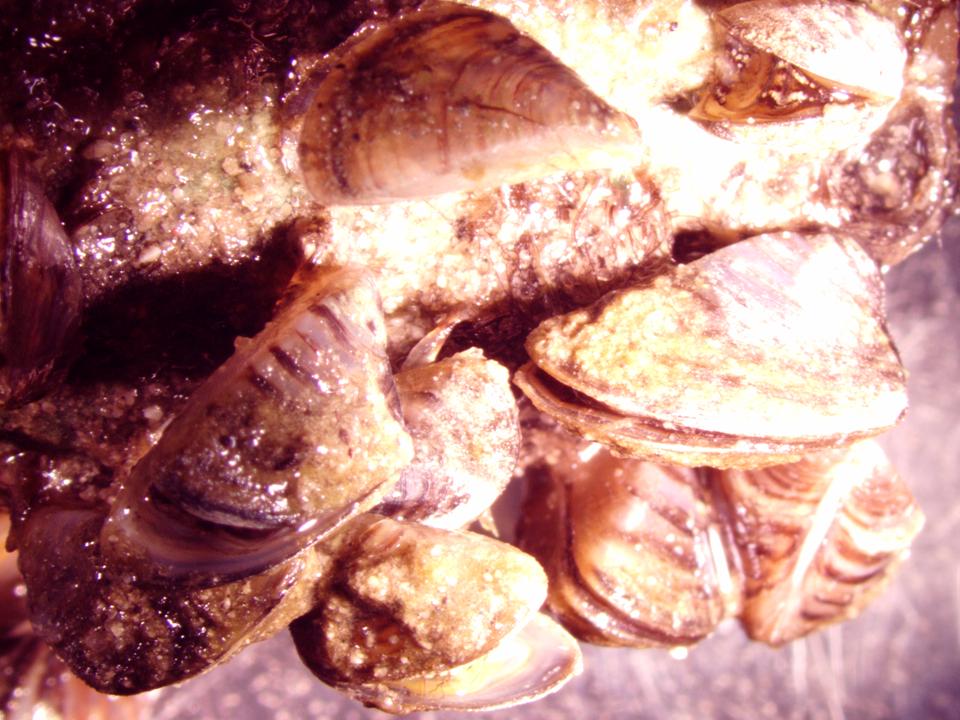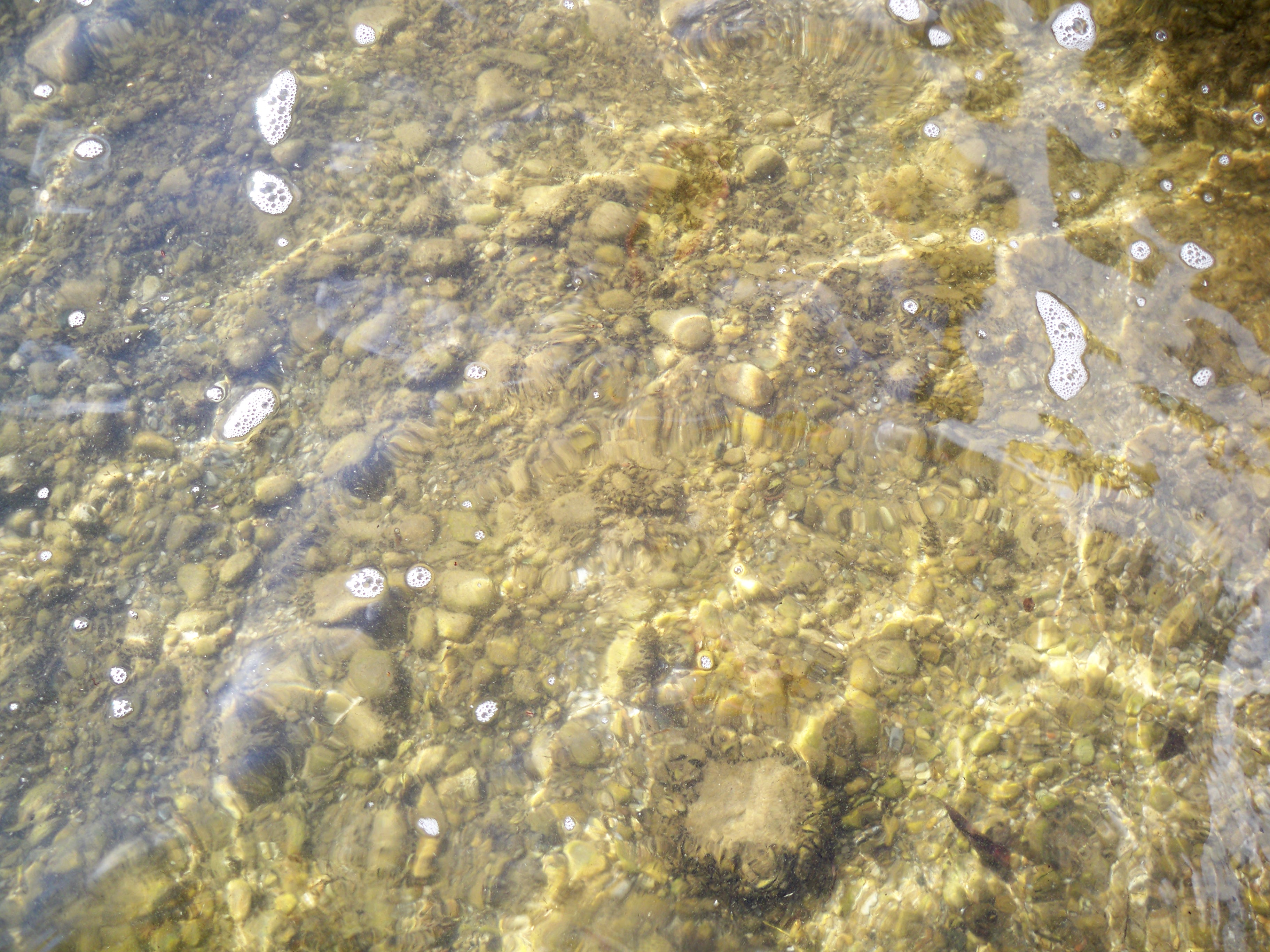Reproduction and Life History
Dreissenids are dioecious and have external fertilization.
Zebra Mussels generally reach their reproductive maturity at the
end of their first year. Reproduction occurs when sperm and egg
are released into the water, usually during the spring or the
summer.
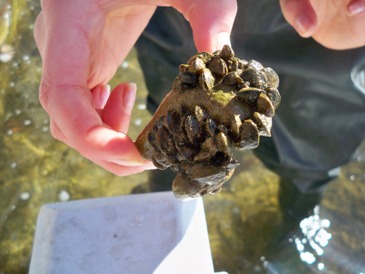
Over
40,000 eggs can be laid by a female mussel
in a single reproductive cycle and even up
to a million eggs
during the
spawning
season.
Fertilization then
occurs in the
water and
3 to 5 days later,
an egg
develops
into a
free-swimming,
planktonic larva
called a "veliger".
The veliger then remains
suspended in the water column for up to five
weeks and eventually begins to sink. Visit
the adaptation
page for more information on the Zebra
Mussels life cycle.
Once a
surface is reached, the veliger can crawl
via a muscular foot than attach to the
substrate using a byssus, an organ outside
of the body containing threads. The veliger
then undergoes morphological changes
including the development of a siphon, foot,
organ systems, and even blood. This form of
the species is known as a postveliger.
Morphological changes continue until the settling stage. This is the stage that attaches to the substrate via byssal threads. Once a Zebra Mussel is attached, it can live anywhere from three to nine years. Their size can range anywhere from 10 mm to 5 cm. Zebra Mussels are generally 15 mm in length.
The Zebra Mussel is a dwelling clam native to Europe and Asia, concentrating in areas such as the Black Sea, Caspian Sea, and Aral Sea. In 1769, Pallas described the species for the first time when he discovered it in the Caspian Sea and the Ural River.
The Zebra Mussels were eventually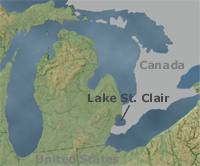 introduced to Great Lakes in 1985 or 1986
and have been spreading since that time. The
mussels were most likely brought over to
North America by water ships where they
located themselves in the ballast during the
larvae stage of their life. They were first
discovered in Lake St. Clair in 1988. And
eventually were found in Wisconsin waters of
Lake Michigan in 1990.
introduced to Great Lakes in 1985 or 1986
and have been spreading since that time. The
mussels were most likely brought over to
North America by water ships where they
located themselves in the ballast during the
larvae stage of their life. They were first
discovered in Lake St. Clair in 1988. And
eventually were found in Wisconsin waters of
Lake Michigan in 1990.
By 1991, the Zebra Mussels made their way into Pool 8 of the Mississippi River. By 2003, the distribution of Zebra Mussels expanded all the way from the entire Wisconsin portion of the Mississippi up to Stillwater in the St. Croix River.
